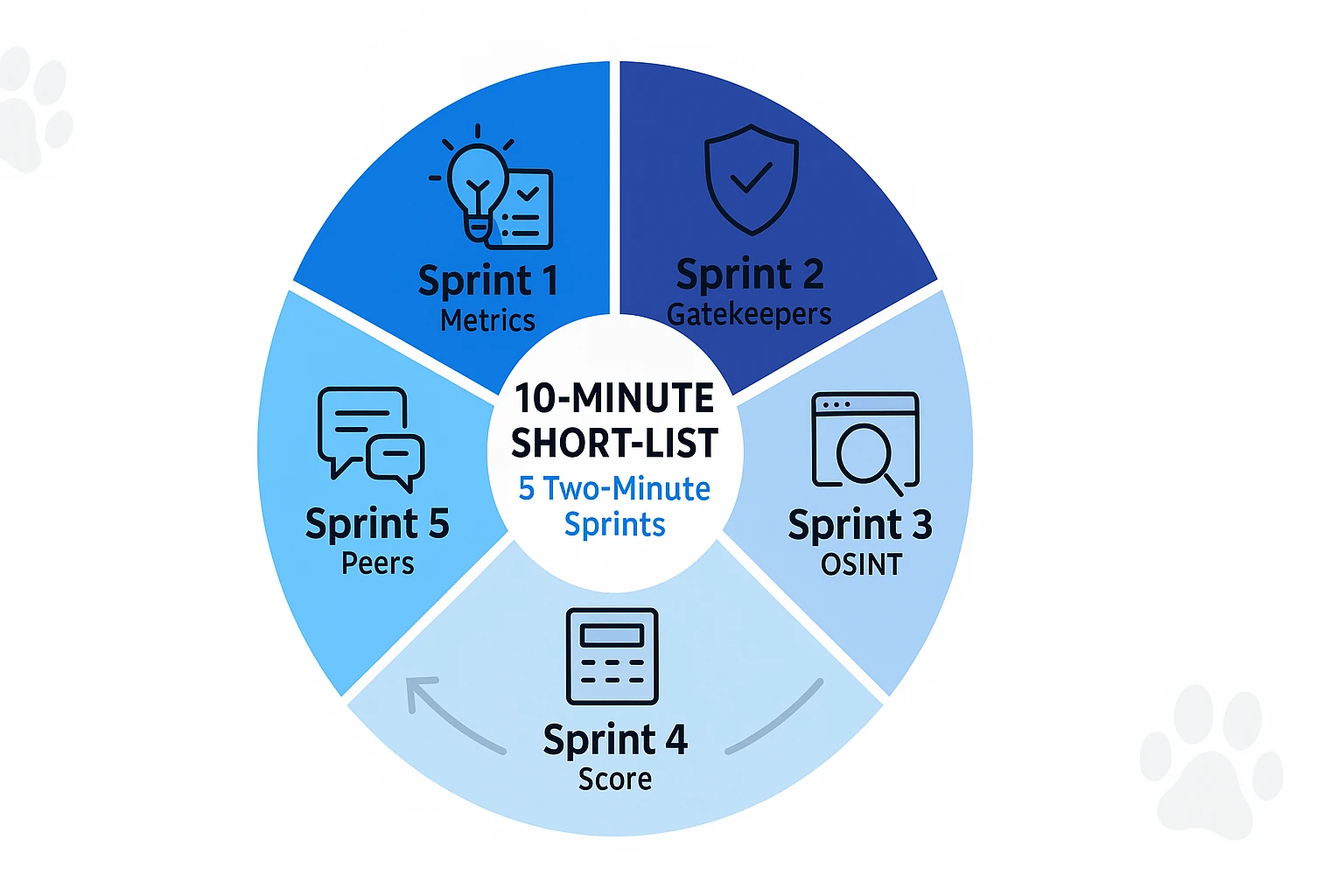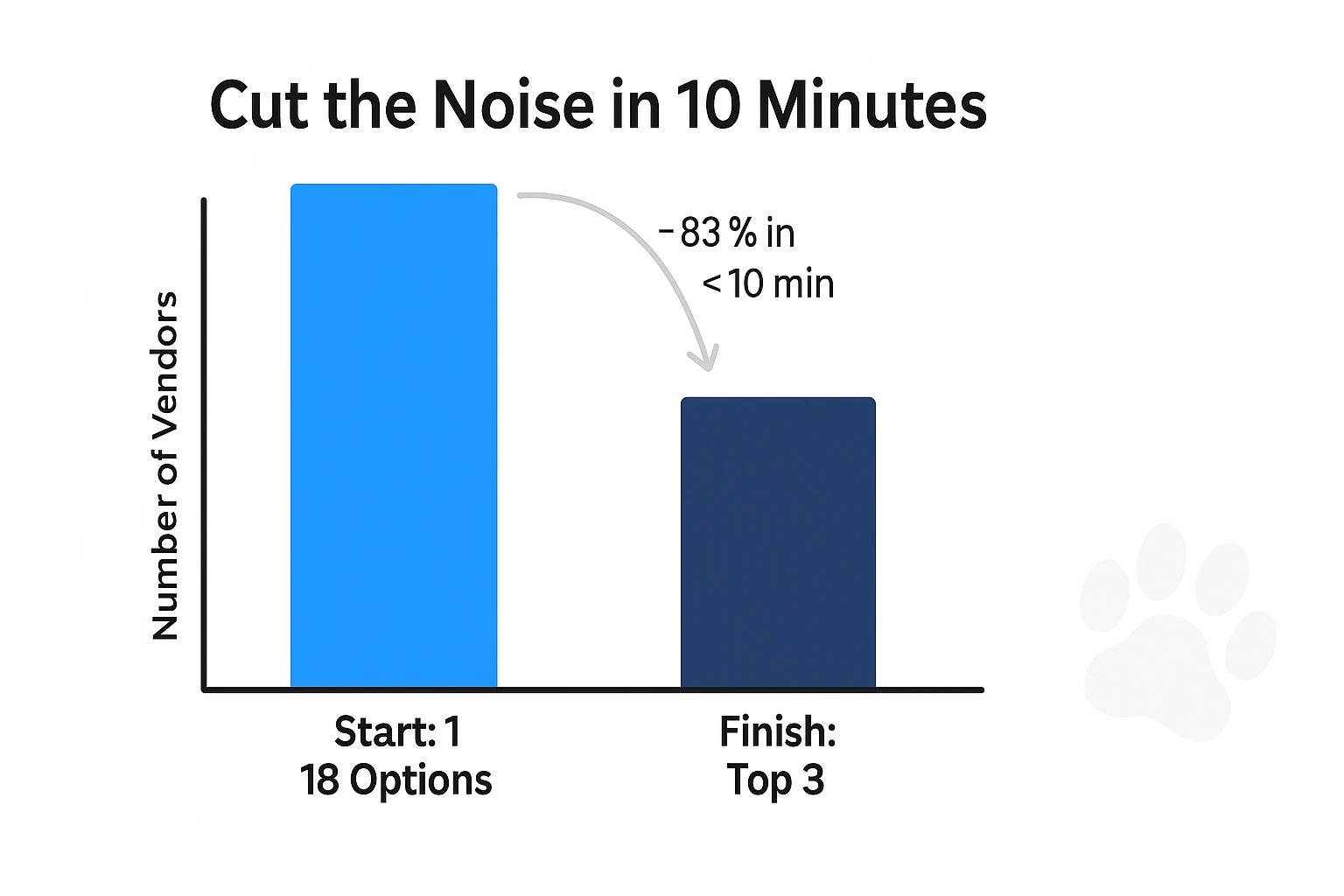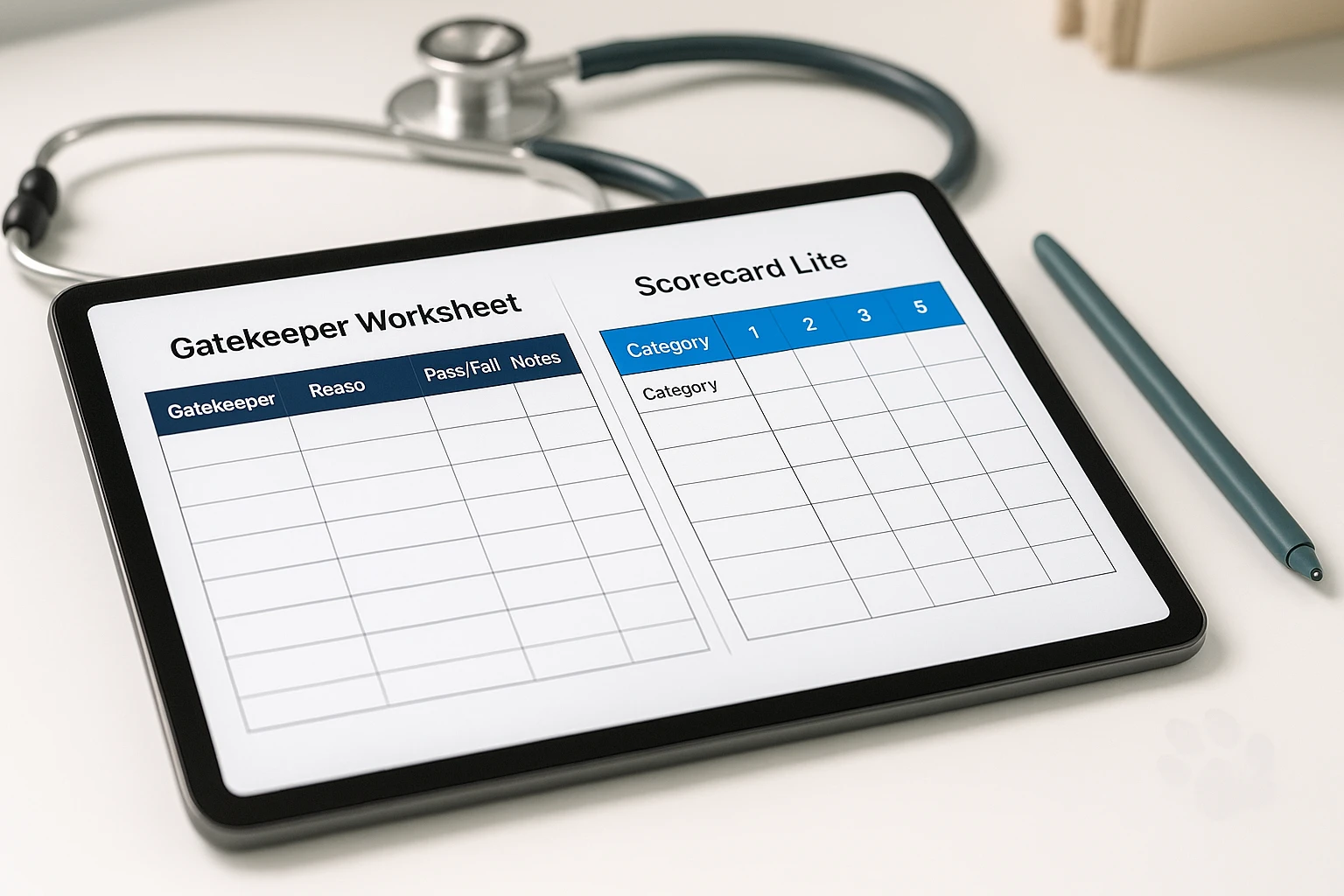“Can we grab thirty minutes on Zoom to show you a quick demo?”
Your calendar groans; your staff rolls their eyes. There has to be a better way.
Veterinary professionals juggle medicine, client care, and business management—all while fielding relentless phone calls from software vendors hungry for a demo slot. Yet most sales calls deliver little actionable insight and a lot of canned slides. What busy hospitals need is a rapid, repeatable method to narrow dozens of tech options to a short, serious list—without talking to sales reps first.
Good news: you can do it in the time it takes to finish a cup of coffee. This guide walks you through a 10‑minute framework that leverages public data, peer reviews, and objective filters to slice through vendor noise. Follow these five two‑minute sprints and you will walk away with a data‑driven shortlist ready for deeper evaluation—no awkward cold calls required.
In this article, we’ll cover:
- Why skip the sales pitch?
- The five two‑minute sprints that power the framework
- Real‑world example: trimming 18 options to 3 in under ten minutes
- Tools & templates: download links and quick wins
- Frequently asked questions
Let’s reclaim your calendar, and your sanity.
1. Why Ditch the Demo ... At Least at First
1.1 Time is Your Scarcest Resource
Every hour your medical director spends on a discovery call is an hour not spent diagnosing patients. Multiply that by technicians, CSRs, and practice managers and the hidden cost of demos balloons fast (see our companion piece: The Hidden Costs of “Free” Veterinary Software Demos).
1.2 Sales Pitches Skew Perception
Demo environments are hand‑polished sandboxes designed to wow, not a true reflection of daily workflow friction. By using objective data first, you sidestep flashy UIs and focus on measurable fit.
1.3 Decision Fatigue Kills Momentum
The average practice speaks to 4.3 vendors before committing, according to VetSoftwareHub’s 2025 Buyer Behavior Study. Each additional call increases decision time by six days. A rapid shortlist keeps projects moving.
2. The 10‑Minute Framework: Five Two‑Minute Sprints
Total Time: 10 minutes
Goal: Trim your universe of options to a Top 3 that merit deeper investigation.
Sprint 1 (Minutes 0‑2): Define One Success Metric per Workflow
- Open a blank note.
- List the three workflows causing the most pain, e.g., appointment scheduling, prescription refills, or curbside check‑in.
- For each, jot down one metric you will use to measure improvement.
Examples:
- Scheduling: “Reduce average phone hold time from 4 minutes to 2.”
- Rx refills: “Cut refill processing clicks by 50%.” - Star the single workflow with the highest financial or morale impact. That becomes your prime filter downstream.
Sprint 2 (Minutes 2‑4): Set Non‑Negotiable Gatekeepers
Gatekeepers are absolute must‑haves. Anything failing a gatekeeper is out, no matter how amazing the user interface looks.
Common gatekeepers:
| Gatekeeper | Reason It's Critical |
| Price ceiling (e.g., <\$500/month) | Protects budget discipline |
| Integration requirement (e.g., works with Cornerstone) | Eliminates double entry |
| HIPPA-ready / SOC 2 Type II | Guards client data |
| Cloud-based only | Support remote work & multi-location growth |





